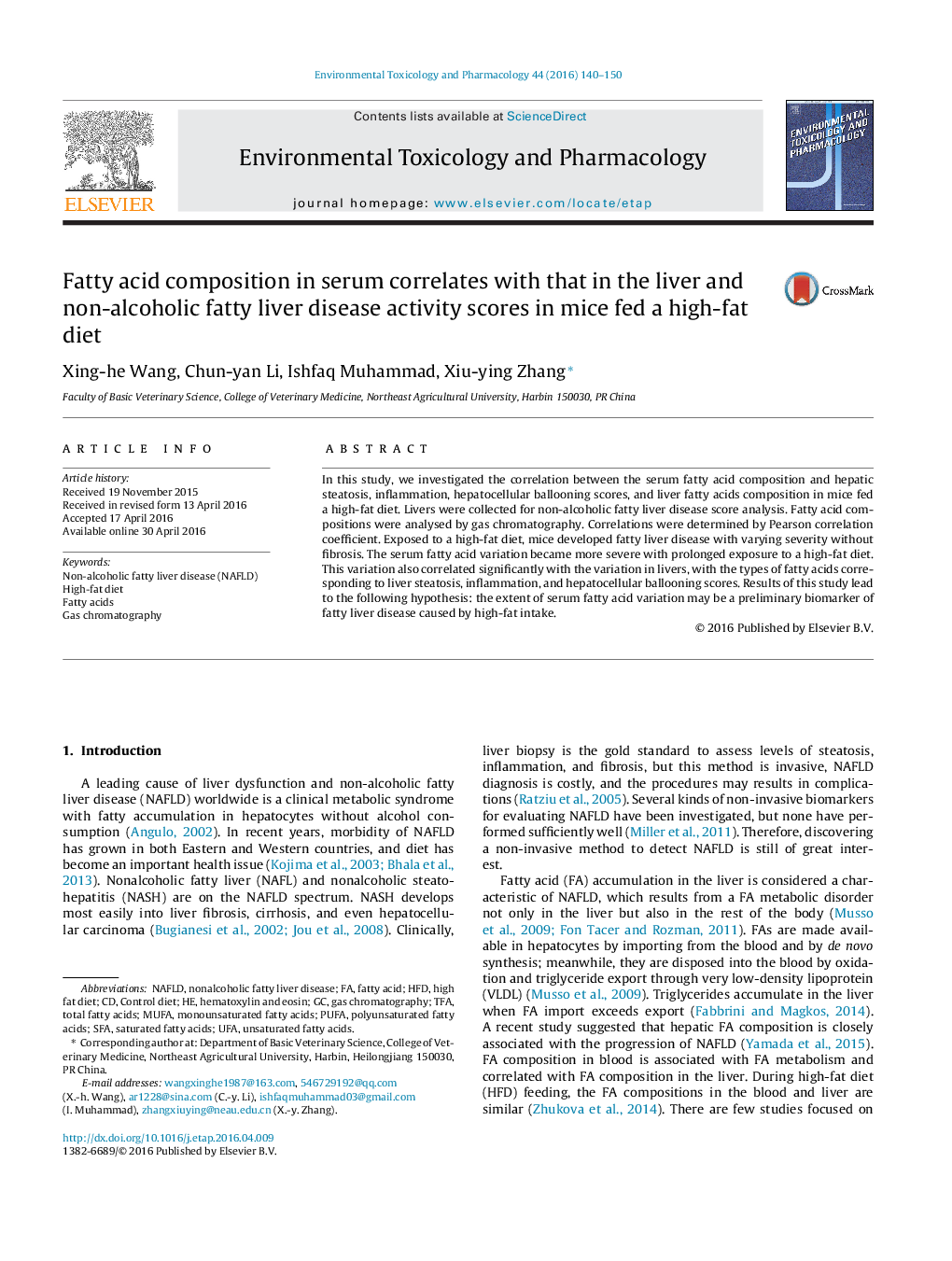| Article ID | Journal | Published Year | Pages | File Type |
|---|---|---|---|---|
| 2582799 | Environmental Toxicology and Pharmacology | 2016 | 11 Pages |
•C18:1 accumulation in mice serum reflect the liver damage related to HFD.•(C25:5 + C22:6)/C18:3 ratio decline in serum reflect the progress of HFD-induced NAFLD.•Decline of △5 desaturase activity in serum is a sign of NAFLD related to HFD.
In this study, we investigated the correlation between the serum fatty acid composition and hepatic steatosis, inflammation, hepatocellular ballooning scores, and liver fatty acids composition in mice fed a high-fat diet. Livers were collected for non-alcoholic fatty liver disease score analysis. Fatty acid compositions were analysed by gas chromatography. Correlations were determined by Pearson correlation coefficient. Exposed to a high-fat diet, mice developed fatty liver disease with varying severity without fibrosis. The serum fatty acid variation became more severe with prolonged exposure to a high-fat diet. This variation also correlated significantly with the variation in livers, with the types of fatty acids corresponding to liver steatosis, inflammation, and hepatocellular ballooning scores. Results of this study lead to the following hypothesis: the extent of serum fatty acid variation may be a preliminary biomarker of fatty liver disease caused by high-fat intake.
